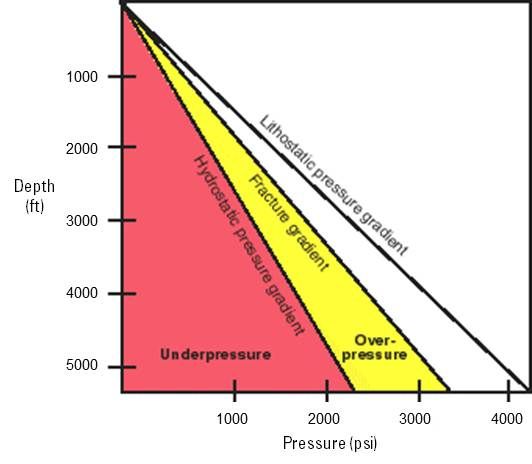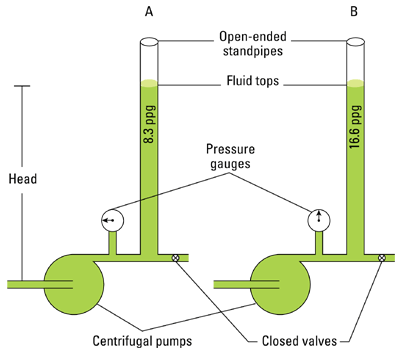1. S. [Geología]
La presión pronosticada normal, correspondiente a una profundidad dada, o la presión ejercida por unidad de área por una columna de agua dulce desde el nivel del mar hasta una profundidad dada. La presión de poro anormalmente baja podría tiene lugar en las zonas en las que los fluidos han sido drenados, tal es el caso de un yacimiento de hidrocarburos agotado. La presión de poro anormalmente alta podría tener lugar en las zonas en las que el sepultamiento de los sedimentos rellenos con agua por un sedimento impermeable, tal como la arcilla, fue tan rápido que los fluidos no pudieron filtrarse y la presión de poro se incrementó con el incremento de la profundidad de sepultamiento.
Ver: presión anormal, presión absoluta, presión de formación, agua dulce, geopresión, gradiente de geopresión, altura hidráulica, carga hidrostática, presión normal, sobrepresión, presión de poro, presión de yacimiento, subpresión

2. S. [Perforación]
La fuerza por unidad de área producida por una columna de fluido. En las unidades de campos petroleros de EUA, esta fuerza se calcula utilizando la ecuación: P=MW*Profundidad*0,052, donde MW es la densidad del fluido de perforación en libras por galón, la Profundidad es la profundidad vertical verdadera o la "altura", en pies, y 0,052 es un factor de conversión de unidades seleccionado de modo que P se expresa en unidades de libras por pulgadas cuadradas (psi).
Ver: pérdida de circulación, carga hidrostática, golpe de presión, presión estática de fondo de pozo, presión estática , profundidad vertical verdadera

3. S. [Fluidos de perforación]
La presión en cualquier punto en una columna de fluido causada por el peso del fluido arriba de ese punto. Controlar la presión hidrostática de una columna de lodo es una parte crítica de la ingeniería del lodo. El peso del lodo debe ser monitoreado y ajustado de manera que siempre permanezca dentro de los límites impuestos por la situación de perforación. Es necesario tener una presión hidrostática suficiente (peso del lodo) para impedir la entrada de fluidos del fondo del pozo, pero la presión excesiva también debe evitarse para evitar la generación de fracturas hidráulicas en la formación, lo que causaría pérdida de circulación. La presión hidrostática se calcula a partir del peso del lodo y la profundidad vertical verdadera, de la siguiente manera:
Presión hidrostática, psi = 0,052 x Peso del lodo, lbm/gal x Profundidad vertical verdadera, pies (para convertir a unidades del SI, 1,0 psi = 6,9 kPa.)
Ver: densidad circulante equivalente, fluido pesado, pérdida de circulación, balanza para lodo, programa de lodos, peso del lodo, balanza para lodo presurizada, fluido de emplazamiento